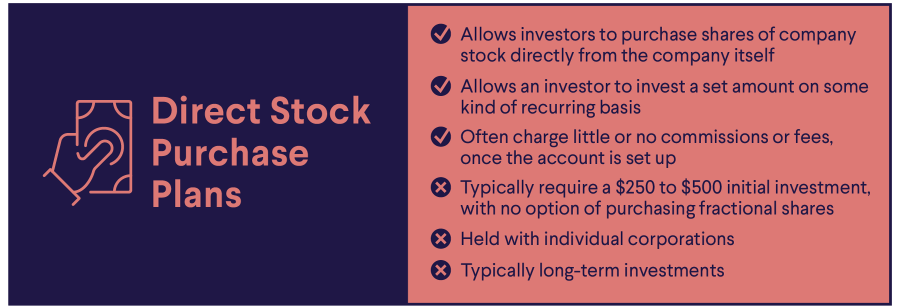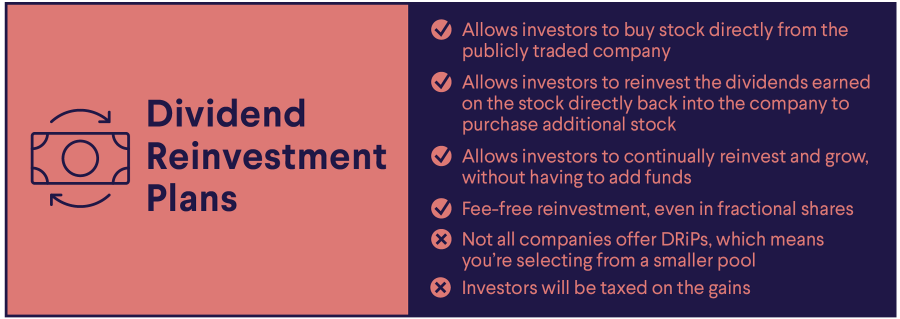Guide to Idle Funds: Where to Put Them
Idle funds are funds that aren’t serving any specific purpose or working for you in any way. This is a term that’s often used when discussing business and government finance. It’s common for government entities and corporations to have idle money sitting in cash reserves until it’s ready to be used for specific expenditures.
It’s also possible for individuals to have idle cash. For example, you might keep a few hundred dollars stashed in your dresser or checking account. That money is technically idle, since it isn’t earning you any interest. The good news is that it’s easy to put idle funds to work so your money has a chance to grow.
Key Points
• Idle funds is the term used to describe money that is sitting and not growing or building your wealth.
• Idle funds can be deposited into high-yield savings accounts to earn competitive interest rates while maintaining liquidity.
• Other options include investing in certificates of deposit (CDs) for fixed interest rates over a set period.
• Brokerage accounts, which invest in stocks, bonds, or mutual funds based on risk tolerance and investment goals, can be used to grow idle funds.
• Consider cash management accounts at brokerages to earn interest while planning longer-term investments, or I Bonds can be another use for idle funds.
What Are Idle Funds?
In personal finance, idle funds or idle savings refers to money that isn’t being invested or otherwise earning interest. Idle funds may be held in cash or sit in a deposit account, like a checking account, at a bank, credit union, or other financial institution. It can be called idle savings, idle cash, or idle money, but it all means the same thing. It’s money that’s doing absolutely nothing. It’s not appreciating in any way or earning you interest.
Here’s another way to think of idle funds. Imagine you’re in a car that’s idling at a stoplight. You’re not moving forward toward any specific destination and you’re not gaining anything; in fact, you’re just burning gas. When you allow your money to sit idle, you’re not getting closer to your financial goals either.
As mentioned, businesses and governments may keep idle savings on hand that don’t earn any interest. They can do so if they plan to spend that money later for a specific purpose, such as an expansion project or funding government contracts. But it’s possible that you might have idle funds without realizing it, which can be a missed opportunity to build wealth.
How Do Idle Funds Work?
Idle funds work by, somewhat ironically, not working for you. Normally, when you deposit money into a savings account, money market account, or investment account, those funds can grow over time.
The bank typically pays you interest on deposits, and you can end up with more money than you started with thanks to compounding interest.
Compounding means earning interest on your interest. The more often interest compounds and the higher the interest rate earned, the more your money can grow. For example, if you deposit $1,000 into an interest-bearing account and earn a 7% annual rate of return, that initial amount would grow to $7,612 after 30 years, even if you never add another dime.
With idle savings, that doesn’t happen. Your money doesn’t earn interest or any kind of return. If you deposit $1,000 into an idle funds account (or have it sitting in a piggy bank) on Day 1, you’d still have that same $1,000 on day 10,000, assuming you don’t make any withdrawals. Since you’re not putting money into a savings account or another account where it can earn interest, idle funds don’t benefit from the power of compounding.
What Is the Value of Idle Funds?
You might assume that the value of idle funds is the same as the money’s face value. So $100 in idle cash would be worth $100. But it’s important to keep the impact of inflation in mind. Inflation refers to a continuous rise in consumer prices for goods and services for an extended time period. In the U.S., the Consumer Price Index (CPI) is one of the most commonly-used measures for tracking inflation.
When inflation is high (as it was in recent memory), your money doesn’t go as far. If gas goes from $3 a gallon to $5 a gallon, for example, it costs more to fill up your tank. When you have idle funds that aren’t earning interest, your money can’t keep up with the pace of inflation. That’s why personal finance experts recommend keeping some of your money in a savings account or investment account as a hedge against the toll inflation takes.
Get up to $300 when you bank with SoFi.
No account or overdraft fees. No minimum balance.
Up to 4.00% APY on savings balances.
Up to 2-day-early paycheck.
Up to $2M of additional FDIC insurance.
Real Life Examples of Idle Funds
Idle money can take different forms but again, it’s all money that isn’t working for your benefit or advantage in some way. Here are some examples of idle funds you might have right now:
• You get a rebate check in the mail that you forget to deposit. Since this money isn’t being used to grow savings, it’s idle.
• Every day, you dump out your coins and dollar bills into a jar that you keep in your closet. Even though you’re saving, this is idle savings because you earn a 0% interest rate.
• Instead of separating some of your money into a savings account, you keep all of your funds in a checking account that doesn’t earn interest. While you might use some of this to pay bills and technically put it to work that way, the rest of your money in the account is idle because it doesn’t grow.
You can also have idle funds if you have money in any type of savings or investment vehicle that doesn’t earn interest. A zero-coupon bond, for instance, doesn’t pay interest to you but instead, allows you to purchase the bond at a deep discount. In that way, when it matures, you enjoy an increase vs. the amount you paid.
Recommended: APY Calculator
Pros of Idle Funds
For governments and businesses, it can make sense to have some idle cash on hand. For example, if there’s a budget shortfall, then a corporation could dip into their idle funds to cover operating expenses.
In terms of why having some idle funds might be a good thing when discussing your personal finances, here are the main pros:
• Idle funds can be liquid assets, meaning you can access your money when you need it.
• Keeping idle money in cash at home means you’re not paying bank fees.
• Waiting to invest idle savings gives you time to research the best investment options for you.
• There’s generally very little risk of losing money in idle funds.
• Putting idle funds to work can be as simple as opening an interest-bearing savings account at a traditional or online bank or starting an investment account.
Cons of Idle Funds
While there are some positives associated with idle funds, there are also some drawbacks to keep in mind. Here are some of the biggest cons of idle money:
• When cash sits idle, it’s not earning interest, and you’re not growing wealth.
• If you’re keeping idle savings in cash at home, you run the risk of it being lost or stolen.
• Keeping all of your money in idle funds means you’re not working toward any financial goals.
• Delaying investment of idle funds can mean missing out on the power of compounding interest.
• Cash sitting in idle funds can lose purchasing power as inflation rises.
Parking Places for Your Idle Money
If you’d like to put your idle funds to good use, there are several places you can keep that money in order to earn interest. When deciding where to keep idle cash, consider what kind of access you’d like to have to those funds, the interest rates you could earn, and the fees you might pay.
Here are some of the different savings accounts to have for idle funds if you’d like to grow your money.
Certificates of Deposit
A certificate of deposit account is a time deposit account. When you deposit money into a CD, you’re agreeing to leave it there for a set time period, until what is known as its maturity date. The bank pays you interest on your deposit, and, once the CD matures, you can withdraw your initial deposit and the interest earned. Or you could roll it over into a new CD.
CD accounts can be a good place to keep idle funds that you know you won’t need any time soon. Online banks can offer competitive rates on CDs with no monthly fees. Just keep in mind that you might pay an early withdrawal penalty fee if you take money from your CD account before maturity.
Brokerage Account
Brokerage accounts are designed to hold money that you invest. For example, you can open a taxable investment account or a tax-deferred individual retirement account (IRA) at a brokerage. The rate of return you earn on your money can depend on how you choose to invest it.
Some brokerages can also offer cash management accounts to hold money that you plan to invest later. These accounts can function like checking accounts, but they can also earn interest. Depositing some of your idle funds into a cash management account at your brokerage can help you earn some interest until you’re ready to invest it.
Recommended: How to Set up a Health Savings Account
High-Yield Savings Account
A high-yield savings account is a savings account that pays an above-average interest rate and annual percentage yield (APY). Traditional banks can offer high-yield savings accounts but you’re more likely to get competitive rates from an online bank. Online banks can also make high-yield accounts more attractive with low initial deposit requirements and no monthly fees.
Opening a high-yield savings account for idle funds could be a good move if you’d like to keep some of your money liquid and accessible. You can link a high-yield savings account to a checking account for easy transfers. Depending on the bank, you may also be able to get an ATM card with your savings account for added convenience.
I Bonds
An I Bond is a type of savings bond that’s issued by the U.S. Treasury. I Bonds can earn a competitive interest rate that’s based on inflation. Putting money into I Bonds could be a good use of idle cash if you’re worried about inflation eating into your spending power. Just keep in mind that I Bonds, like CDs, are designed to be longer-term investments and cashing them out early could cost you some of the interest earned.
The Takeaway
Having idle funds (money that’s just sitting and not appreciating in value) isn’t necessarily a bad thing. However, it’s important to understand what you could be missing out on if your savings or cash isn’t earning any interest. If you’re unsure what to do with idle money, some options include a high-yield savings account, a CD, or other financial products that can help you grow your wealth.
Interested in opening an online bank account? When you sign up for a SoFi Checking and Savings account with direct deposit, you’ll get a competitive annual percentage yield (APY), pay zero account fees, and enjoy an array of rewards, such as access to the Allpoint Network of 55,000+ fee-free ATMs globally. Qualifying accounts can even access their paycheck up to two days early.
FAQ
What is the best option for me to activate idle funds?
If you have idle funds, depositing them into a high-yield savings account can be the fastest way to put them to use. Online banks typically offer these kinds of savings accounts with competitive interest rates and no or low monthly fees. You can link your online savings account to your checking account for convenient access to your money.
Are idle funds always a bad thing?
Idle funds aren’t always a bad thing if you’re planning to invest or save them at some point in the near future. For example, you may have $1,000 sitting in a cash management account at your brokerage that you plan to invest in stocks. Since that money does have an end goal, the fact that it’s idle in the meantime isn’t so bad.
Can idle funds ever improve your money?
Having some idle funds could offer reassurance if you’d like to have a go-to stash of cash on hand for emergencies. Whether idle funds can improve your money depends on where you’re keeping them, how you plan to use them, and whether you have other funds that are actively working for you and earning interest.
Photo credit: iStock/Ivan Halkin
SoFi® Checking and Savings is offered through SoFi Bank, N.A. ©2024 SoFi Bank, N.A. All rights reserved. Member FDIC. Equal Housing Lender.
The SoFi Bank Debit Mastercard® is issued by SoFi Bank, N.A., pursuant to license by Mastercard International Incorporated and can be used everywhere Mastercard is accepted. Mastercard is a registered trademark, and the circles design is a trademark of Mastercard International Incorporated.
SoFi members with direct deposit activity can earn 4.00% annual percentage yield (APY) on savings balances (including Vaults) and 0.50% APY on checking balances. Direct Deposit means a recurring deposit of regular income to an account holder’s SoFi Checking or Savings account, including payroll, pension, or government benefit payments (e.g., Social Security), made by the account holder’s employer, payroll or benefits provider or government agency (“Direct Deposit”) via the Automated Clearing House (“ACH”) Network during a 30-day Evaluation Period (as defined below). Deposits that are not from an employer or government agency, including but not limited to check deposits, peer-to-peer transfers (e.g., transfers from PayPal, Venmo, etc.), merchant transactions (e.g., transactions from PayPal, Stripe, Square, etc.), and bank ACH funds transfers and wire transfers from external accounts, or are non-recurring in nature (e.g., IRS tax refunds), do not constitute Direct Deposit activity. There is no minimum Direct Deposit amount required to qualify for the stated interest rate. SoFi members with direct deposit are eligible for other SoFi Plus benefits.
As an alternative to direct deposit, SoFi members with Qualifying Deposits can earn 4.00% APY on savings balances (including Vaults) and 0.50% APY on checking balances. Qualifying Deposits means one or more deposits that, in the aggregate, are equal to or greater than $5,000 to an account holder’s SoFi Checking and Savings account (“Qualifying Deposits”) during a 30-day Evaluation Period (as defined below). Qualifying Deposits only include those deposits from the following eligible sources: (i) ACH transfers, (ii) inbound wire transfers, (iii) peer-to-peer transfers (i.e., external transfers from PayPal, Venmo, etc. and internal peer-to-peer transfers from a SoFi account belonging to another account holder), (iv) check deposits, (v) instant funding to your SoFi Bank Debit Card, (vi) push payments to your SoFi Bank Debit Card, and (vii) cash deposits. Qualifying Deposits do not include: (i) transfers between an account holder’s Checking account, Savings account, and/or Vaults; (ii) interest payments; (iii) bonuses issued by SoFi Bank or its affiliates; or (iv) credits, reversals, and refunds from SoFi Bank, N.A. (“SoFi Bank”) or from a merchant. SoFi members with Qualifying Deposits are not eligible for other SoFi Plus benefits.
SoFi Bank shall, in its sole discretion, assess each account holder’s Direct Deposit activity and Qualifying Deposits throughout each 30-Day Evaluation Period to determine the applicability of rates and may request additional documentation for verification of eligibility. The 30-Day Evaluation Period refers to the “Start Date” and “End Date” set forth on the APY Details page of your account, which comprises a period of 30 calendar days (the “30-Day Evaluation Period”). You can access the APY Details page at any time by logging into your SoFi account on the SoFi mobile app or SoFi website and selecting either (i) Banking > Savings > Current APY or (ii) Banking > Checking > Current APY. Upon receiving a Direct Deposit or $5,000 in Qualifying Deposits to your account, you will begin earning 4.00% APY on savings balances (including Vaults) and 0.50% on checking balances on or before the following calendar day. You will continue to earn these APYs for (i) the remainder of the current 30-Day Evaluation Period and through the end of the subsequent 30-Day Evaluation Period and (ii) any following 30-day Evaluation Periods during which SoFi Bank determines you to have Direct Deposit activity or $5,000 in Qualifying Deposits without interruption.
SoFi Bank reserves the right to grant a grace period to account holders following a change in Direct Deposit activity or Qualifying Deposits activity before adjusting rates. If SoFi Bank grants you a grace period, the dates for such grace period will be reflected on the APY Details page of your account. If SoFi Bank determines that you did not have Direct Deposit activity or $5,000 in Qualifying Deposits during the current 30-day Evaluation Period and, if applicable, the grace period, then you will begin earning the rates earned by account holders without either Direct Deposit or Qualifying Deposits until you have Direct Deposit activity or $5,000 in Qualifying Deposits in a subsequent 30-Day Evaluation Period. For the avoidance of doubt, an account holder with both Direct Deposit activity and Qualifying Deposits will earn the rates earned by account holders with Direct Deposit.
Members without either Direct Deposit activity or Qualifying Deposits, as determined by SoFi Bank, during a 30-Day Evaluation Period and, if applicable, the grace period, will earn 1.20% APY on savings balances (including Vaults) and 0.50% APY on checking balances.
Interest rates are variable and subject to change at any time. These rates are current as of 12/3/24. There is no minimum balance requirement. Additional information can be found at https://www.sofi.com/legal/banking-rate-sheet.
*Awards or rankings from NerdWallet are not indicative of future success or results. This award and its ratings are independently determined and awarded by their respective publications.
Financial Tips & Strategies: The tips provided on this website are of a general nature and do not take into account your specific objectives, financial situation, and needs. You should always consider their appropriateness given your own circumstances.
This content is provided for informational and educational purposes only and should not be construed as financial advice.
Third Party Trademarks: Certified Financial Planner Board of Standards Inc. (CFP Board) owns the certification marks CFP®, CERTIFIED FINANCIAL PLANNER®, CFP® (with plaque design), and CFP® (with flame design) in the U.S., which it awards to individuals who successfully complete CFP Board's initial and ongoing certification requirements.
Tax Information: This article provides general background information only and is not intended to serve as legal or tax advice or as a substitute for legal counsel. You should consult your own attorney and/or tax advisor if you have a question requiring legal or tax advice.
SOBNK-Q424-095
Read more









